Landscape Photography with the Nikkor Z 70-200 f2.8
If I had to name my favourite landscape photography lens, that would be, without a doubt, the Nikkor Z 70-200 f2.8. This is the lens I am looking forward to shooting landscape photography with the most. However, is it the lens I use the most? No. Is it the lens I have the most fun with? Yes! ..and by far. There are several different reasons why. In this article, I will hopefully be able to show you why I like this lens so much, how I use it and why.
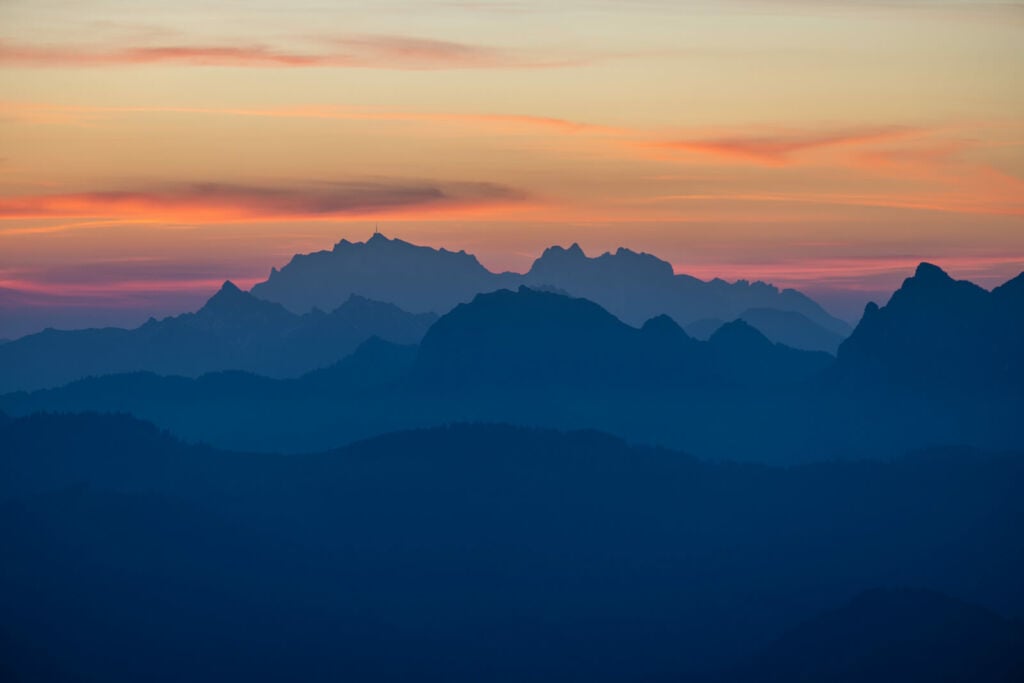
Sunrise in the Swiss Alps
I am a big fan of shooting landscapes with telephoto lenses, so the Nikkor Z 70-200 was a must-have when it came out. I previously used Nikkor 70-200 VRII version on my Nikon D800, so I’ve been using this focal range for a very long time. Occasionally at the beginning, but I ended up bringing this telephoto lens with me more and more.
Also, a quick additional note: this will not be a technical post. There are plenty of those out there on the internet. Instead, as a hiking photographer, this post will be focused on how I use the lens on the trail for landscape and why. I will show sample photos for anyone interested in the image quality and to see how this lens performs for Landscape.
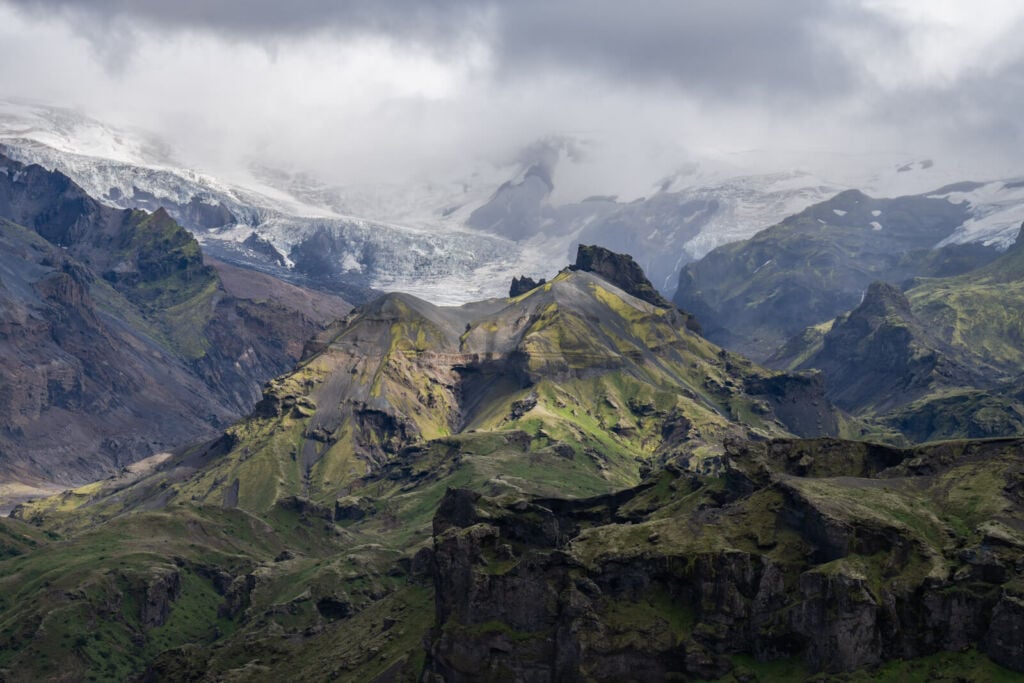
Glacier in Thorsmork, Iceland. Handheld exposure, 1/160 at 101mm, f8, ISO 64.
My Camera Setup
Like most hikers and photographers, I am very weight-aware when I go hiking. My gear camera gear is a Nikon Z7 II, the Nikkor Z 14-24 f2.8 lens, the 24-70 f4 and my favourite lens: the 70-200 f2.8. I also have a drone and an action camera for the occasional filming, plus a tripod and a variety of filters. I rarely bring all this gear with me. The default lens on my camera is the 24-70, which is good enough for most occasions. If interested, here you can find more details on the gear I use and why.
Hiking with the Nikkor Z 70-200 f.2.8
As I mentioned in the intro, while this is the lens I have the most fun shooting with, I do not always have it with me. As someone who regularly goes on 20+ km and 1500+ m elevation gain day hikes, I pay a lot of attention to the gear I bring. This applies to all of my gear, though. If there is no reason to bring the 14-24 f2.0 or my drone, I will leave them at home too. Actually, I am more likely to have the 70-200 rather than 14-24 when I’m hiking up a mountain.
This is how I decide whether it is worth bringing the telephoto lens. First, I research each trail thoroughly, using 3D and topo maps to study the terrain and its feature, point of interest and other people’s photos. Then, I combine all that information to assess which lenses make the most sense to bring. So when I study the trail and decide to bring the 70-200 lens with me, I can safely say I’ll be a happy day.
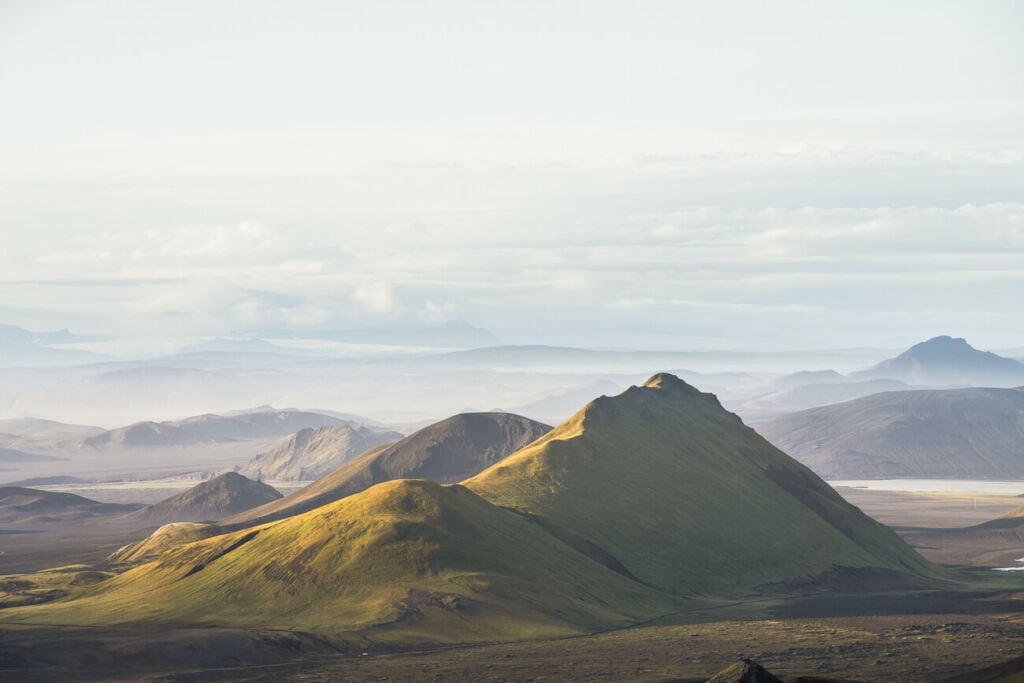
One of the many mountains around Landmannalaugar, in the Highlands of Iceland.
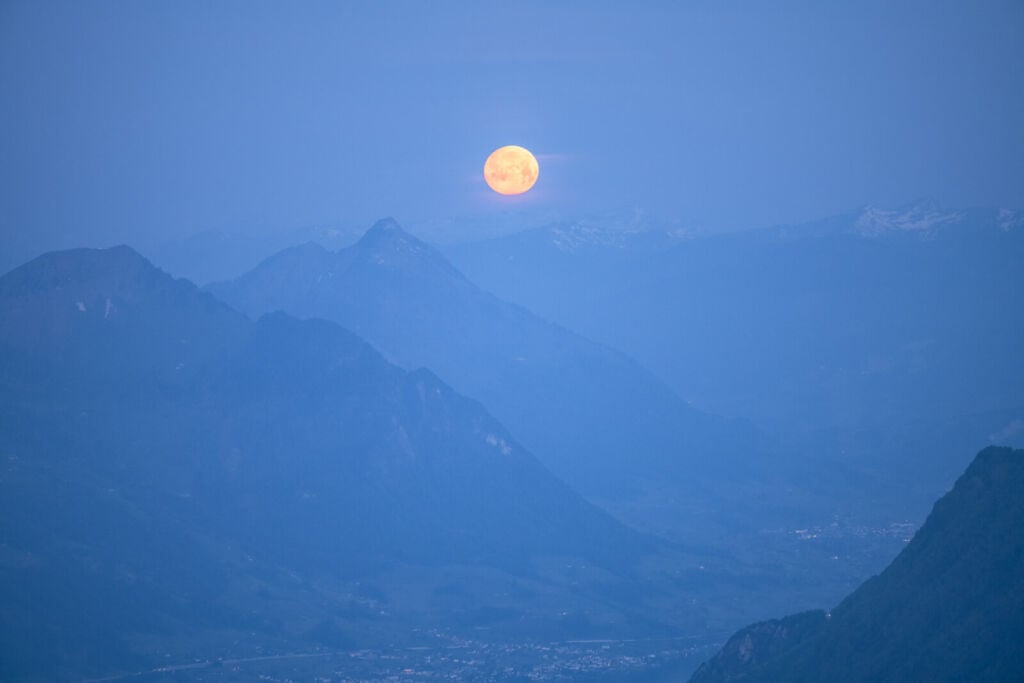
Moon Rising above Lake Lucern in Central Switzerland. Handheld Exposure, 1/6 at 200mm, f2.8, ISO 640.
Why choose 70-200 f 2.8 vs 70-200 f.4 for Landscape Photography
Well, we all know there isn’t a native Nikkor Z 70-200 f4 lens yet. While I would have looked into this option had an f4 version been available, I likely not have bought it either. Yes, it would be cheaper and a lighter lens to carry around, but I like to have the option to use a shallower depth of field and wider aperture when certain conditions require it. Plus, when shooting in low light conditions, the wider aperture allows me to go handheld instead of setting up a tripod. This is, of course, a matter of personal preferences.
I sometimes wish I had a little more reach than 200mm, let’s say, about 20% of the time. Still, as much as I’d like to shoot with the 100-400, I’d rather have the wider aperture that the 70-200 offers when I needed it, compared to the extra reach of the 100-400. Of course, I can still crop in post if need be.
I won’t get into the details of the image quality of this lens. However, I previously used the Nikkor 70-200 f2.8 VRII, and I can say the image quality of the Z version is noticeably better to the naked eye.
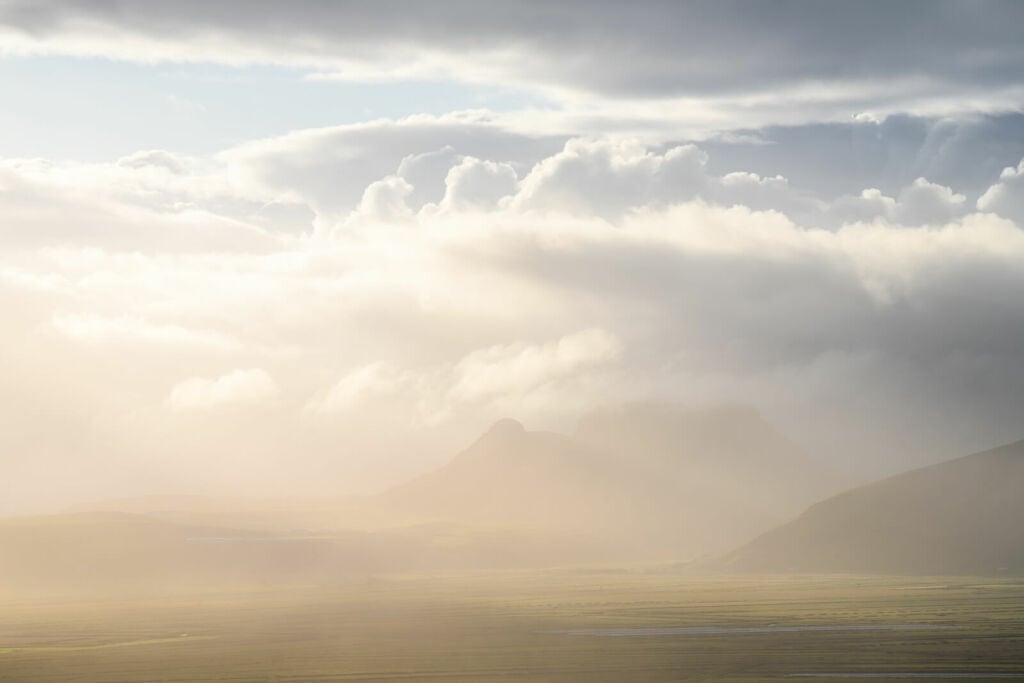
Epic light in Iceland, from the top of Reynisfjall, Near Vik. Handhel exposure, 1/60 at 125mm, f8, ISO 64
Favorite Terrain and shooting style
Hiking, to me, usually means getting atop mountains, where there are wide open views. I usually look for distant subjects. Looking at geographical features from a different perspective. Looking at landscape subjects from afar helps find new perspectives on landmarks that have been photographed several times too.
Also, the main benefit here is how many compositional opportunities this situation offers. I can easily spend an hour on top of a mountain taking photos in different directions and in different light. This works particularly well in the early morning or late evening, around sunrise or sunset, when the light changes fast.
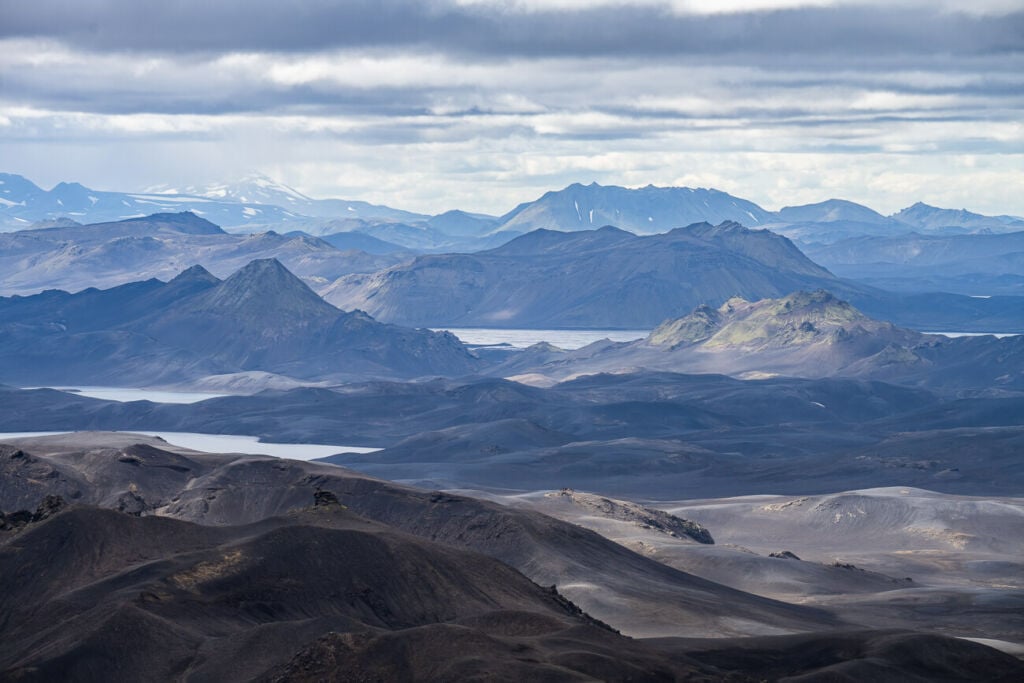
The highlands of iceland arund Sveinstindur. Handhelshot at 200mm, f8, ISO 64
Main benefits of landscape photography with a 70-200mm Telephoto Lens
the following section outlines the main benefits of shooting landscapes with the 70-200 range. These come from my personal experience and, of course, not only apply to Landscape with the Nikkor Z 70-200 f2.8 but to any lens that offers this telephoto range.
-
Subject isolation
Isolating distant subjects gives you a clear focus object in the image and gives it a proper “character”. For example, you have a single protagonist in tour photos, and the other elements in the frame should work to make the subject “shine”.
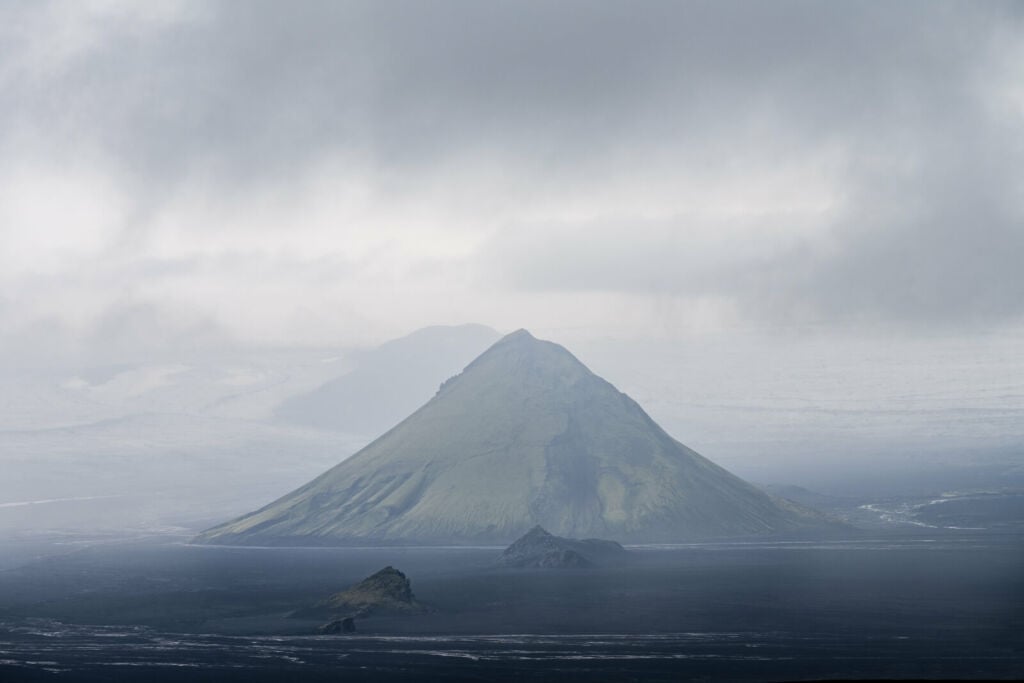
Mt. Maelifell, Iceland. Handheld Exposure, 1/200 at 200mm, f8, ISO 64
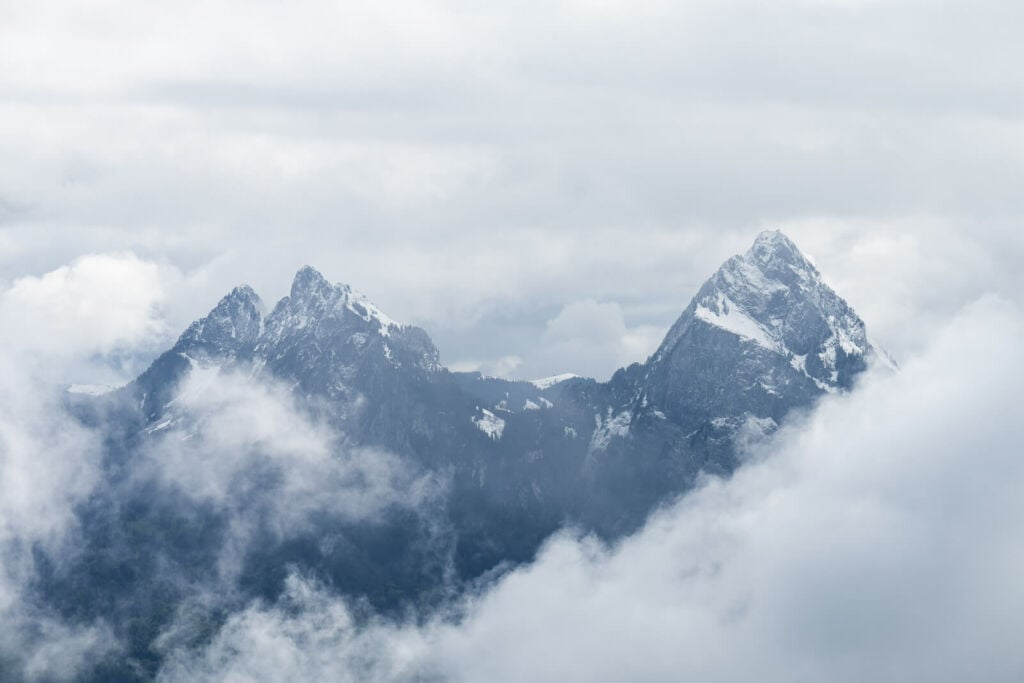
The The Grosser and Kleiner Mythen, Switzerland. Same settings as the previous photo.
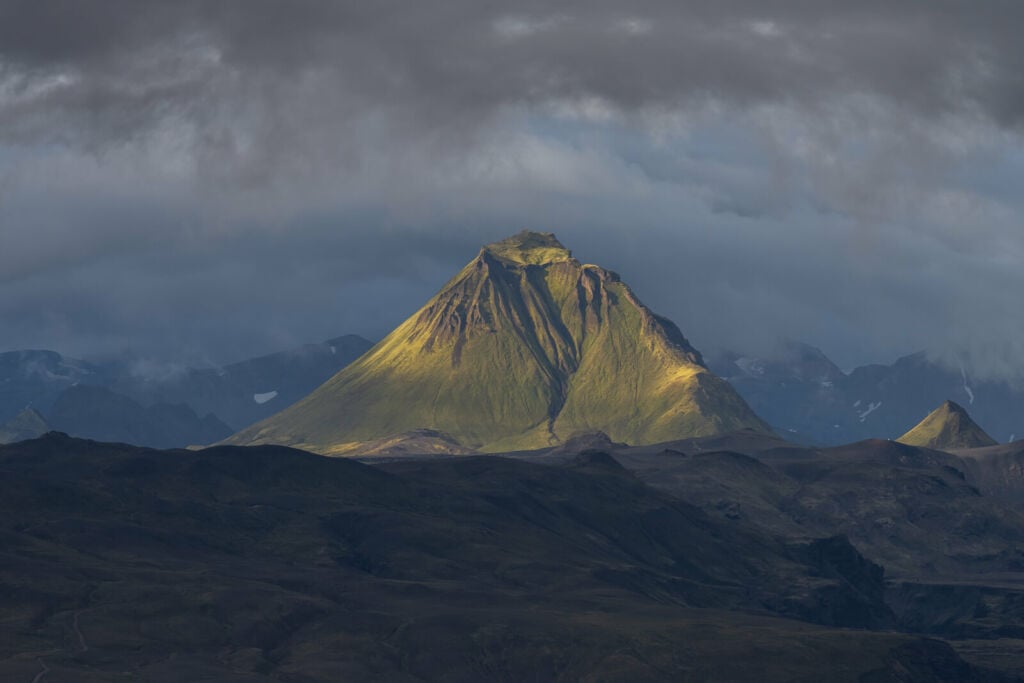
Mt. Hattfell, Iceland. Handheld Exposure, 1/100 at 200mm, f8, ISO 64.
-
Multiple compositions from the same vantage point
The ability to isolate subjects also brings another significant advantage: the opportunity to find multiple compositions. By moving slightly, you could find a completely different subject you can compose for an entirely different image. Depending on your subjects and views, that could exponentially multiply the number of photos you can take of other subjects. Here’s an example of two photos taken from the same location. The two following images were taken from the same spot.
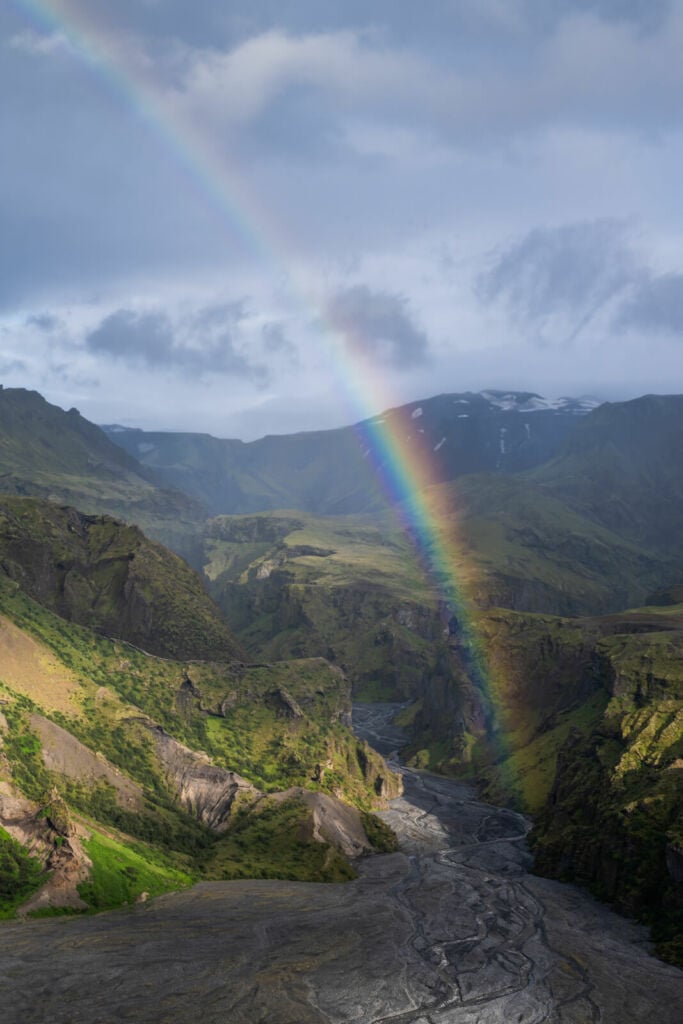
Rainbow in Thorsmork, Iceland. From the Top of Valahnúkur. Handheld, 70mm, f8, ISO 64.
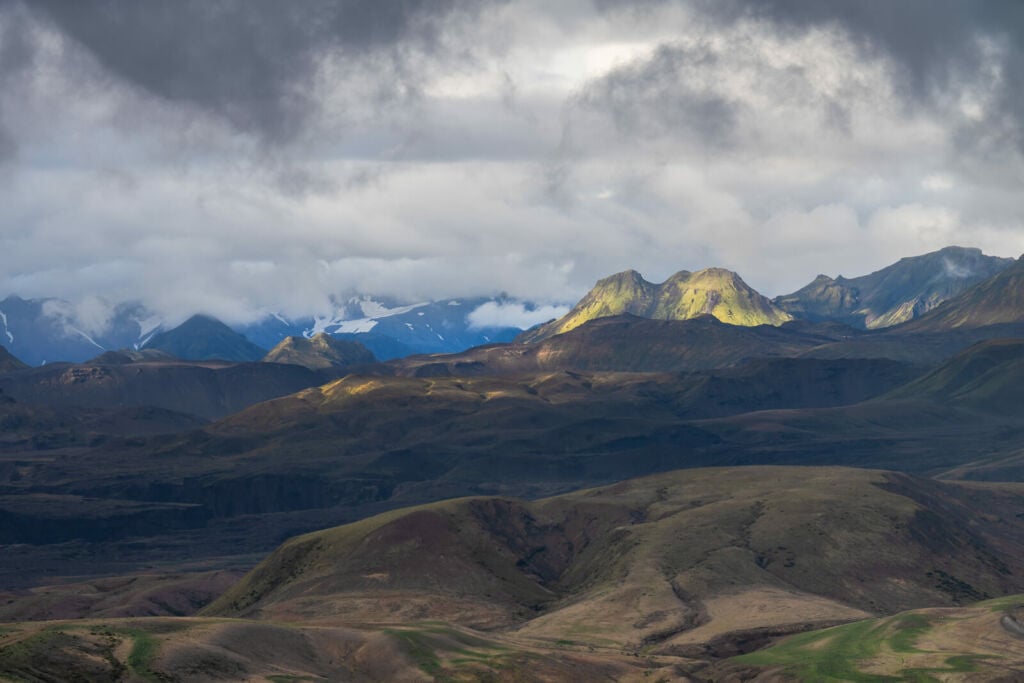
The highlands of Iceland to the North. Same sport as the previous one, the same setting, except this is a 200mm shot.
-
Compressions
Compressions allow you to create layered images and give you the ability to include several far-away subjects to make them look like they are much closed to each other than they are in reality. In addition, by bringing different geographical features together, you’ll have the ability to “play” with lines and shapes that simply do not exist when shooting with other focal lengths.
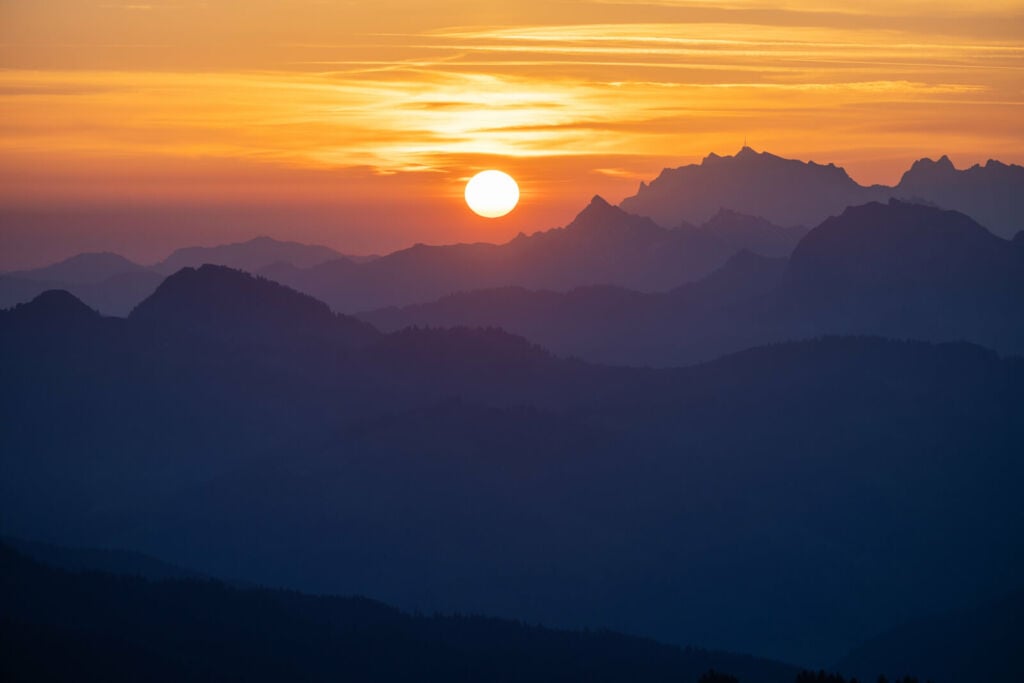
The sun rising above the Swiss Alps. Exposure 1/1000, 200mm at f3.5 and ISO 64.
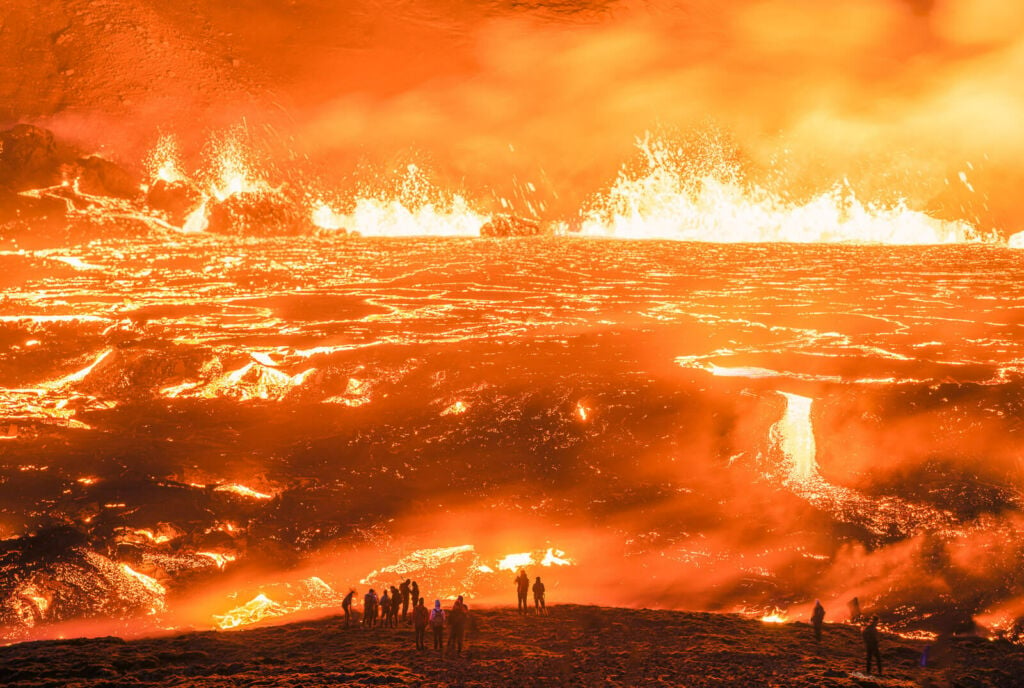
Hikers enjoying the 2022 Fagradalsfjall volcanic eruption in Meradalir, Iceland. One second exposure on a tripod, 70mm at f2.8, Iso 64.
-
Reach where you could not reach otherwise.
This is probably the most obvious reason, but a telephoto lens will allow you to photograph objects you may not get to. As an example, here below, you can see the tallest waterfall in Iceland, Morsafoss, and the erupting Fagradalsfjall Voclano. Neither could be reached on foot. Getting to Morsafoss would require a long and dangerous glacier crossing, and the volcano speaks for itself, even if this guy did win a darwin award trying.
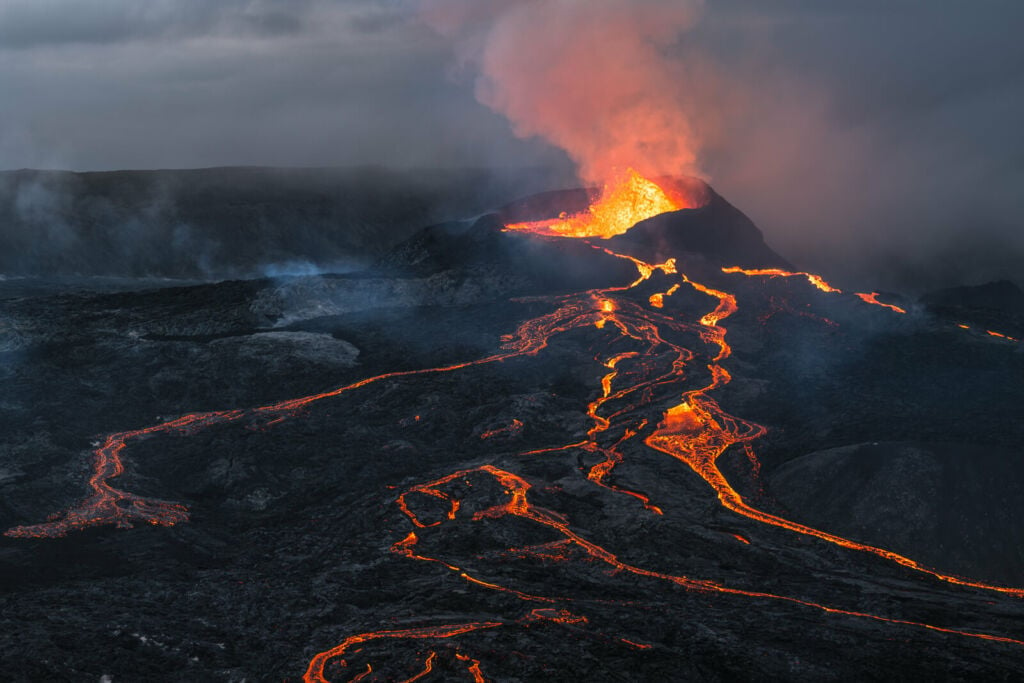
The 2021 Fagradalsfjall volcanic eruption in Geldingadalir. Mounted on a tripod, Exposure 1/3- at 102mm, f7.1, ISO 64.
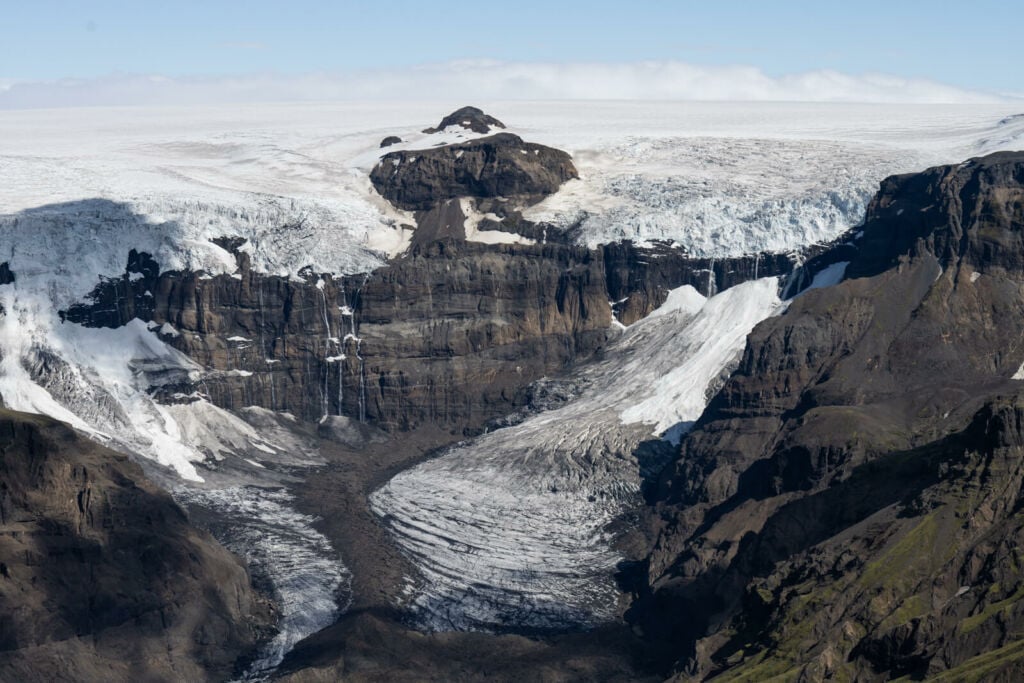
Morsárfoss (or Morsárfosaar) photographed from the top of Kristínartindar in the Skaftafell National Park, Iceland. Handheld Exposure, 1/640 at 78mm, f7.1, ISO 64.
-
The occasional Wildlife
While I am not a wildlife photographer, nor do I pretend to be even remotely good at shooting Wildlife, I enjoy the option to try at least when the occasion presents itself.
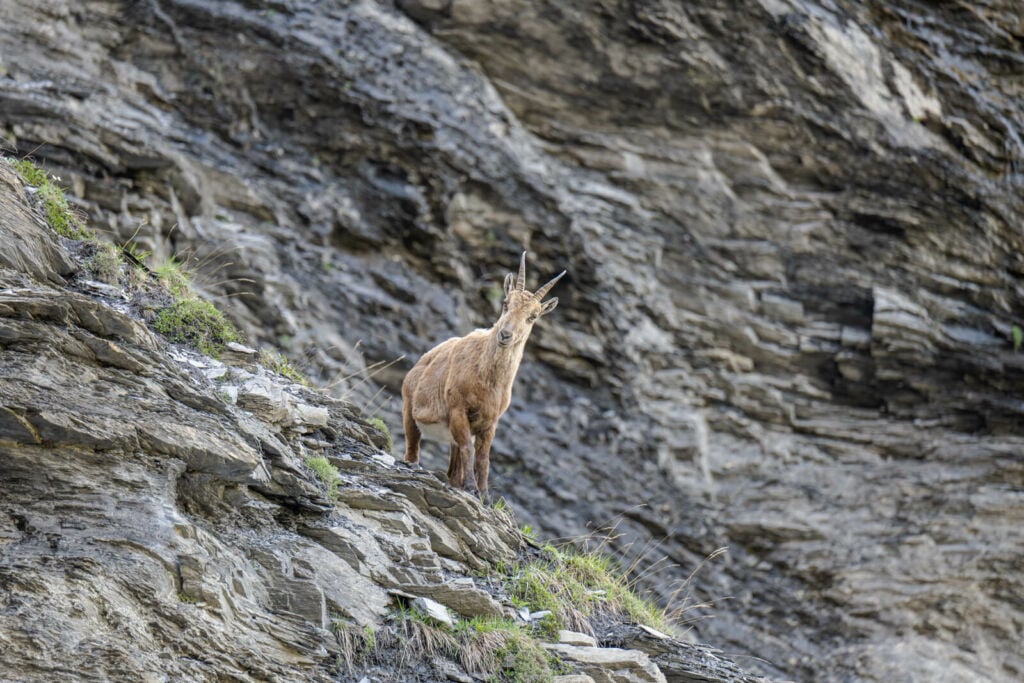
Ibex on the Swiss Alps. Exposure 1/60, Handheld, 200mm at f2.8, ISO 64.
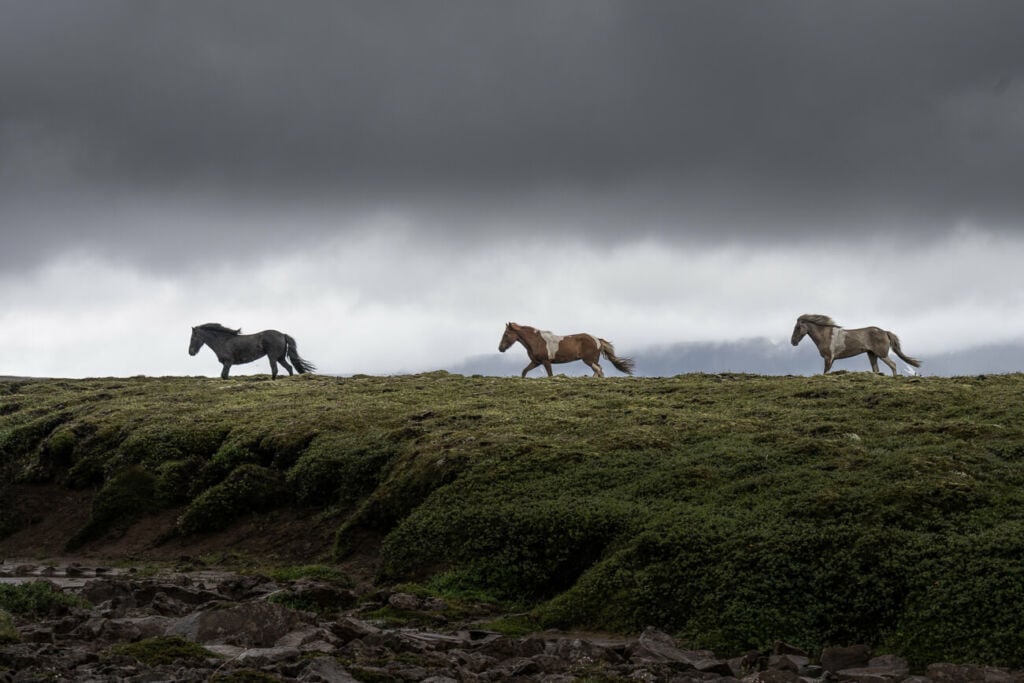
Icelandic horses running free in the highlands. Exposure 1/400, Handheld, 71mm at f.7.1, ISO 64.
The Single most important benefit of using a 70-200 mm telephoto lens for landscape photography
In my personal experience, there is one main benefit of using a telephoto lens for landscape photography. As a consequence of all the benefits mentioned above, ultimately, shooting with a 70-200 will significantly improve your compositional skills. This will help you develop an eye to spot compositions where others may not be able to. A 70-200mm lens will force you to carefully weigh the subject, the composition and the ability to spot them from afar even before you look into the viewfinder. It will teach you to see and look at the landscape differently.
Choosing a composition that works is never easy, but I’d argue the longer the focal length, the more difficult it is to frame and compose appropriately. In addition, minor camera movements will result in a significant shift in the composition. As a result, this will force you to pay more attention to the main compositional features (i.e. diagonals, leading lines) rather than the subject itself.
Once you learn to see and compose through a telephoto lens, the skills you’ve learnt are convertible, and you will be able to use them with any focal length too.
Landscape with the Nikkor Z 70-200 f2.8 – Conclusion
What can I say? I am partial to it; I love shooting Landscapes with the Nikkor Z 70-200 and, generally speaking, landscape photography with the 70-200 focal length. The Nikkor Z 70-200 f2.8 is by far the lens I have the most fun with when shooting. If you were wondering about the capabilities and benefits of using this focal range for landscape, I hope you could find some answers in my experience or a little inspiration for your photographic journeys!
Additional Resources:
- A review of my new favorite photo editing Software, Luminar Neo AI.
- Tips to improve your Snow and Winter Landscape Photography.

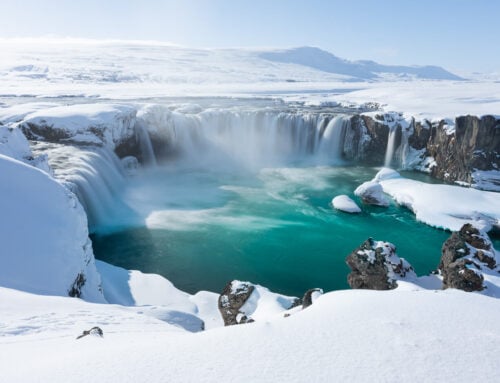
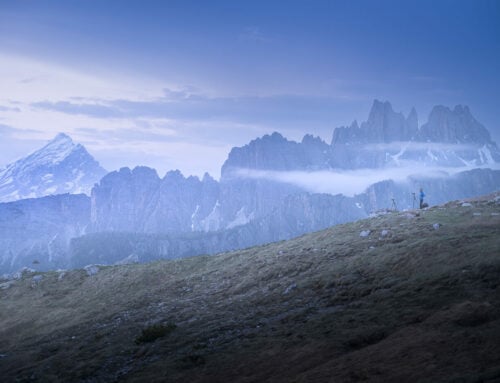
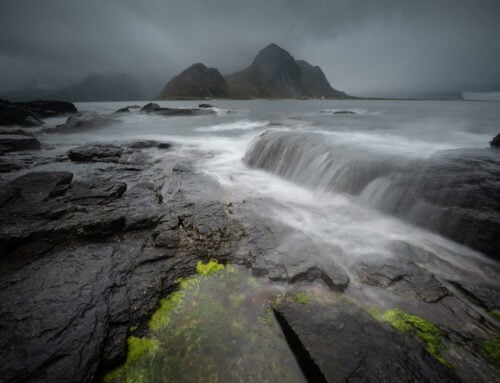

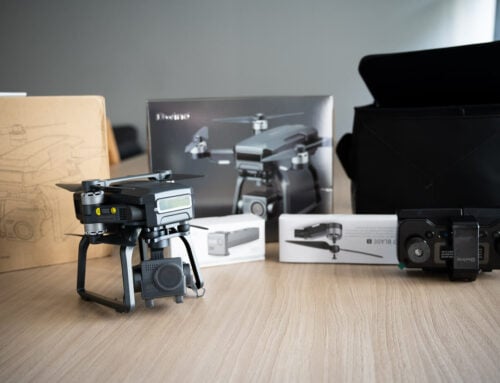
Reasonably accurate review.
Thank you Kevin! Appreciate the feedback, it’s a lens and focal length I am very passionate about for landscapes